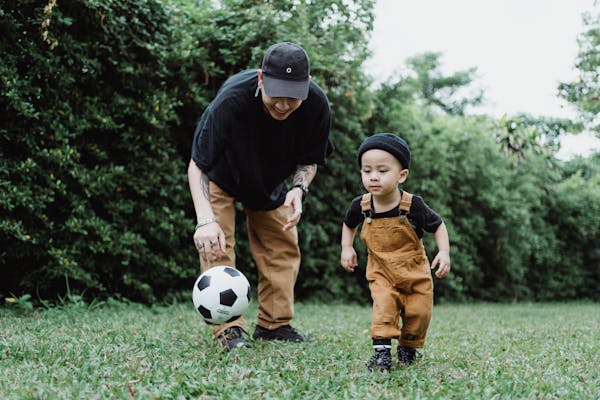How to Co-Parent Peacefully After Divorce

Mastering Co-Parenting After Divorce in 2025
Divorce can feel like a storm, but co-parenting after divorce doesn’t have to be a war zone. I learned this the hard way when my ex and I were butting heads over our daughter’s schedule. One evening, we sat down with coffee, created a parenting plan, and everything changed—she smiled more, and we argued less. This 2025 guide shares eight practical tips to build harmonious co-parenting, prioritize a child-first divorce, and make co-parenting after divorce smoother. Whether you’re navigating custody or emotions, these strategies will help. Ready to transform your co-parenting journey? Let’s dive in!
Feeling overwhelmed? Explore our guide on avoiding parental burnout.
Why Co-Parenting After Divorce Matters
Co-parenting after divorce is about teamwork to raise your kids despite being apart. When my ex and I started focusing on our son’s happiness, we stopped fighting over small stuff. A OurFamilyWizard guide explains that harmonious co-parenting reduces stress for kids, fostering stability and confidence. Kids thrive when parents prioritize a child-first divorce, avoiding conflict that can harm their emotional growth. By working together, you create a nurturing environment, even post-divorce.
1. Set Clear Boundaries
Boundaries are the foundation of co-parenting after divorce. I told my ex, “Let’s stick to kid-related talk,” and it cut out drama. No more personal jabs or late-night arguments! OurFamilyWizard suggests setting rules like no personal questions or discussing new partners to ensure harmonious co-parenting.
How to Start: List three boundaries, like “no texting after 8 PM” or “keep talks about school and health.”
2. Create a Clear Parenting Plan
A parenting plan is your co-parenting blueprint. My ex and I mapped out custody, holidays, and even doctor visits. It was a game-changer—no more last-minute stress! OurFamilyWizard outlines steps like setting schedules and decision-making roles to support a child-first divorce. A solid plan ensures consistency, so kids feel secure.
How to Start: Draft a weekly custody schedule and include holidays.

3. Communicate Respectfully
Tone can make or break co-parenting after divorce. I used to send snappy texts, but switching to neutral emails changed everything. My ex and I now discuss our daughter’s needs calmly. OurFamilyWizard recommends co-parenting apps like OurFamilyWizard for clear, respectful communication, reducing misunderstandings and fostering harmonious co-parenting.
How to Start: Use a neutral phrase, like “Can we discuss Mia’s school project?”
4. Stay Flexible
Life isn’t perfect, and neither is co-parenting. When my ex needed to swap weekends for work, I said yes—it kept peace. Flexibility is key to co-parenting after divorce. The Family Law Group notes that adapting to unexpected changes, like a sick child or school event, supports a child-first divorce and reduces tension.
How to Start: Agree to one schedule change this month, like swapping a pickup day.

Want calmer parenting? Discover gentle parenting tips!
5. Put Your Child First
A child-first divorce means kids come before grudges. I stopped arguing in front of my son, and his anxiety eased. Active Parenting emphasizes focusing on children’s emotional and physical needs to strengthen co-parenting after divorce. This approach builds trust and happiness for kids.
How to Start: Ask, “How will this choice affect our child?” before deciding.

6. Avoid Badmouthing Your Ex
Negative talk hurts kids more than you think. I caught myself almost complaining about my ex, but I stopped—my daughter didn’t need that. The Family Law Group warns that badmouthing undermines harmonious co-parenting and confuses kids. Instead, highlight your ex’s strengths to support a child-first divorce.
How to Start: Say one positive thing about your ex to your child, like “Dad’s great at soccer.”
7. Resolve Conflicts Peacefully
Conflicts are inevitable, but they don’t have to escalate. When my ex and I disagreed over school choices, we used a mediator to talk it out. Active Parenting suggests strategies like addressing loyalty conflicts (when kids feel torn) and reducing anger through calm discussions. These skills foster harmonious co-parenting and keep kids out of the crossfire.
How to Start: Next time you disagree, take a deep breath and suggest a neutral solution, like “Let’s find a middle ground.”
8. Use Tools and Apps for Co-Parenting
Technology can simplify co-parenting after divorce. I started using a co-parenting app to track schedules and expenses, and it cut misunderstandings. OurFamilyWizard recommends apps like OurFamilyWizard or Cozi for managing parenting plans, medical needs, and even financial agreements. These tools promote harmonious co-parenting by keeping everything organized.
How to Start: Download a co-parenting app and set up one feature, like a shared calendar.
Table: Co-Parenting After Divorce Tips
| Tip | Why It Works | How to Start |
|---|---|---|
| Set Boundaries | Reduces conflict | List three rules |
| Parenting Plan | Ensures consistency | Draft a schedule |
| Child-First Divorce | Prioritizes kids | Focus on child’s needs |
| Resolve Conflicts | Keeps peace | Suggest neutral solutions |
This table sums up key strategies for co-parenting after divorce!
Quote to Inspire Your Journey
“Co-parenting is a team effort for your child’s happiness.” — Anonymous
This captures the heart of harmonious co-parenting!
Common Mistakes to Avoid
I’ve made plenty of co-parenting slip-ups. Here’s what to watch for:
- Arguing in Front of Kids: It stresses them out, hurting a child-first divorce.
- Ignoring the Parenting Plan: Inconsistency confuses kids and breaks harmonious co-parenting.
- Badmouthing Your Ex: It damages kids’ trust and loyalty.
- Neglecting Financial Agreements: Unclear expense splits cause fights, per Active Parenting.
- Being Rigid: Lack of flexibility fuels conflict.
Want stronger bonds? Check out building a parent-child bond.
Tools to Make Co-Parenting Easier
Beyond apps, other tools can help. I started a shared Google Doc for our parenting plan updates, and it kept us aligned. OurFamilyWizard suggests using calendars, expense trackers, and even mediation services to streamline co-parenting after divorce. These tools save time and support a child-first divorce by focusing on organization.
Why Co-Parenting Peacefully Transforms Lives
Co-parenting after divorce isn’t just about schedules—it’s about giving kids stability. My daughter’s grades improved when my ex and I mastered harmonious co-parenting. Research shows kids with cooperative parents are happier and more resilient (The Family Law Group). A clear parenting plan, respectful communication, and a child-first divorce create a nurturing environment where kids thrive, even after divorce.
Conclusion: Start Co-Parenting Peacefully Today
Co-parenting after divorce can be a peaceful journey with these eight tips—building a parenting plan, embracing a child-first divorce, and fostering harmonious co-parenting. Your kids deserve parents who work as a team. Which tip will you try first? Share in the comments! For more parenting wisdom, explore building a strong parent-child bond. Here’s to a happier, calmer co-parenting future!
Sources
- OurFamilyWizard. (n.d.). The ultimate guide to co-parenting: Tips and principles for healthy communication after divorce. OurFamilyWizard Blog. https://www.ourfamilywizard.com/blog/coparenting-guide-healthy-communication-after-divorce.
- Active Parenting. (n.d.). Parents’ guide to cooperative co-parenting through separation or divorce. Active Parenting. https://activeparenting.com/product/cooperative-coparenting-through-separation-or-divorce-parents-guide/.
- The Family Law Group. (n.d.). Co-parenting after divorce: Tips for a smooth transition. The Family Law Group. https://thefamilylawgroup.net/divorce/co-parenting-after-divorce-tips-for-a-smooth-transition/.
- OurFamilyWizard. (n.d.). Parents’ guide to co-parenting plans: Step-by-step. OurFamilyWizard Blog. https://www.ourfamilywizard.com/blog/creating-perfect-parenting-plan-6-steps.








